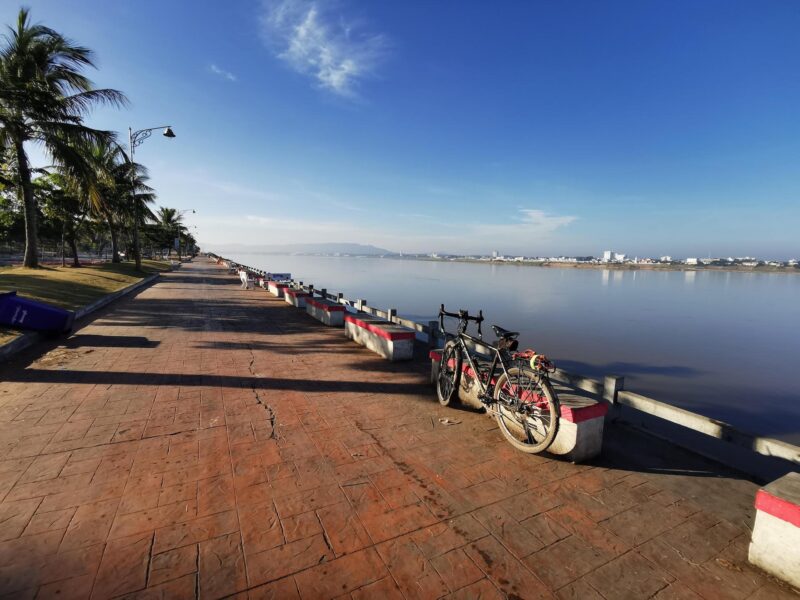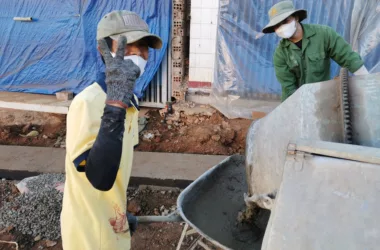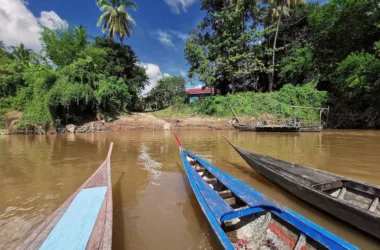For the roaming programmer, Laos presents a fascinating tapestry of challenges and adventures. The fusion of its raw landscapes with the demands of a digital life creates a unique experience for those willing to pedal the path less taken. Here’s a look at the quintessential hurdles faced while intertwining the life of a cyclist with that of a programmer in this unvarnished Southeast Asian country.
1. Hunting for Work Havens

The quest for a suitable workspace in Laos is less about luck and more about careful navigation and planning. Cities like Pak San and Savannakhet offer the urban conveniences of coworking spaces and cafes, creating pockets of productivity where the digital worker can thrive. But between these oases, the landscape is dotted with villages where air-conditioned corners are a rare find. As a result, I’ve learned to embrace the rhythm of the road, cycling through until I discover these work-friendly sanctuaries, typically spaced 200-300 kilometers apart. This cycle (pun intended) of 2-3 days on the road followed by a similar span of focused work has become my cadence of choice.
2. The Culinary Curveball

Navigating the culinary waters of Laos is an exercise in adaptation. Western food, sushi, or vegetarian dishes are scarce commodities, often leading to a variety of Asian noodle dishes, though occasional Thai offerings like Gapao Rice and Papaya Salad provide some culinary diversity. Menus are typically not in English, lacking pictures to guide the uninitiated, turning meal ordering into a game of culinary charades. For the food-flexible cyclist, this can be an opportunity to dive deep into the local flavors — for others, it’s a lesson in dietary flexibility.
3. Navigating the Rugged Routes

Laos is not a country where the roads are paved with good intentions; often, they’re not paved at all. Major highways may offer smooth passage, but the adventurer will soon find themselves on dust-laden dirt roads that render distances deceivingly daunting. For the tech-savvy traveler, ensuring the safety of your electronic lifeline means packing your laptop with care, armored against the unpredictable jolts of the Laotian landscape. Coupled with the omnipresent dust, heat, and rain, these roads command respect and a slower pace.
4. The Fatigue Factor

Continuous days of cycling under the relentless sun can drain your reserves, making the prospect of work seem herculean. The key to managing this is pacing — knowing when to push and when to coast. The last cycling day before a work phase is intentionally lighter, allowing for recuperation and the preservation of precious mental energy for programming tasks. It’s a delicate balance: too much exertion leads to wasted days recovering, too little means not reaching your next destination on time.
5. Embracing the Spartan Stay

The standard of cleanliness in Laotian accommodation may fall short of what one might be accustomed to in Thailand, let alone Japan, Canada, or the U.S. Moldy air conditioners, lingering odors, and less-than-spotless bedding can be jarring. Yet, embracing these conditions as part of a greater Sādhanā — a spiritual exercise in discomfort — allows for a deeper connection with the local way of life. If you’re someone for whom cleanliness is next to godliness, Laos might challenge your inner peace.
To sum up, cycling and working in Laos is more than a test of physical and professional prowess — it’s a full-scale lifestyle experiment. It requires a malleable mindset, a resilient body, and a deep-seated sense of adventure. It’s not just about the kilometers clocked or the lines of code written; it’s about the stories collected, the patience fostered, and the life lessons learned on the dusty, sun-baked roads of this captivating country.




